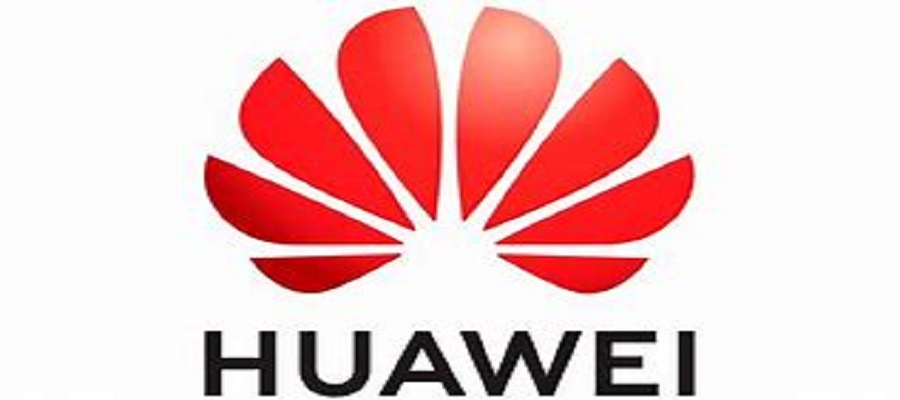E-Business
2014 Digital Marketing: 10 Things You Need to Know!

Businesses always need to find new ways how to leverage themselves through innovative marketing applications.
They often make use of multichannel communications to reach their target audiences.
Digital marketing can help to raise awareness of business. It comprises distinct sets of tools including dynamic websites, blogs, email marketing, social-networking sites and search engine optimisation among other channels.
These days entrepreneurs can build stronger ties with their networks through the following tactics:
1. Corporate sites have to be compatible with different browsers on mobile devices including smart phones and tablets.
2. Navigation in the corporate sites should be as easy as possible, with user-centred design. Corporate businesses’ sites may possibly enable interactive information sharing, inter-operability and collaboration across Twitter, Facebook, LinkedIn Google +, among others.
3. Rotating testimonials are used to pull customers by providing views of satisfied customers. Marketers can create a forum where clients or web visitors can ask questions, get tech support, or post comments. Consumers themselves are quickly becoming ambassadors for businesses’ products and services. For instance,Trip Advisor and Yelp offer trusted advice, opinions and reviews from real customers. Very often, customers are posting their pictures and experiences associated with products and brands on Instagram and Pinterest.
4. Online marketing is usually carried out through Google AdWords,Bing Ads, and Facebook.
5. The purpose of search engine optimization is to enhance the visibility of web sites in search engine results. Through effective SEO, relevant keywords will direct more traffic to web sites. Nowadays there are many firms offering professional SEO software. In addition to marketing analytics software, customers will usually access SEO and inbound marketing resources.
6. Google has changed the search landscape with the introduction of GoogleMaps. When web users search for places, Google locates all the businesses on its map.
7. Social media accounts are also open for business. Some of the latest networks allow their prospective users to login to their site from Facebookor Twitter.
8. Businesses can showcase their products or services through Youtube, Dailymotion, Vimeo and Vine. Marketeers are increasingly uploading short, fun videos which often turn viral.
9. Emails are forwarded to lists of customers and prospects which are based on their past purchases. Emails and e-newsletters are an effective way to retain existing customers. Many customers like to be informed of the latest products and offers.
10. Customers’ are often invited or rather pushed to share Facebook statuses / tweets about business offers and deals as a requirement to take part in competitions. Businesses and customers alike have also learned how to use the hashtag (#) to enhance the visibility of their posting.
This contribution provides some good advice on contemporary digital marketing. The most successful business practitioners are those who are capable of forging direct relationships with their customers.
Consumers ought to be involved in marketing and selling activities; from product development to after-sales feedback. In this day and age, it is imperative that companies value their consumers’ opinions and preferences on various aspects of the marketing mix.
Kanu Iroegbu is a certified digital marketing consultant with Net Media Reacd. He can be reached via: netmediareach@gmail.comnetmediareach@gmail.com
E-Business
Attackers Target Employees with Fake HR Updates

Kaspersky has identified an advanced phishing campaign targeting employees with personalised emails and attached documents disguised as HR policy updates.

This campaign marks a significant escalation in phishing tactics, with attackers tailoring not only the email body, but also the attachments by addressing individual recipients, showcasing an unprecedented level of customisation. The goal was to lure the victim into entering their corporate email credentials.
The attackers likely prepared by parsing employee names to make the campaign targeted and more convincing.
The emails feature a deceptive body: a fraudulent “verified sender” badge to build trust, the recipient’s name, and an invitation to open the attached file to review remote work protocols, benefits administration and security standards. However, the whole email body is in reality just an image with no real text in it; this is done to bypass email filters.
The attached document, posing as an updated “Employee Handbook,” does not contain any actual guidelines – only a title page, a table of contents with the items that have supposedly been changed highlighted in red, a page with a QR code, supposedly for going to the full document and common instructions on how to read QR codes using a phone. The document features the victim’s name multiple times to convince that this document was created specifically for them.
If the victim scans the QR code and follows the link, they land on a fraudulent page where they are asked to enter their corporate credentials, which is what the attackers are hunting for.
“This campaign demonstrates a new level of sophistication in phishing attacks, and we may be seeing a new mailing automation mechanism that generates a separate attached document and a separate image for the email body for each recipient.
“This tactic allows to scale the attack and at the same time possibly evade traditional defenses. Organisations must prioritise advanced security measures and employee education to stay ahead of these threats,” comments Roman Dedenok, Anti-Spam Expert at Kaspersky.
E-Business
Temu Joins INTA to Combat Counterfeits and Elevate IP Standards Worldwide

Temu, the global online marketplace, has joined the International Trademark Association (INTA) as a corporate member and serves on its Anti-Counterfeiting Committee.

INTA is a global association that brings together more than 6,700 organizations, representing over 37,000 trademark professionals and brand owners across 181 countries. By joining INTA, Temu deepens its commitment to building a trusted online marketplace and advancing global IP protection through broader, cross-industry collaboration.
“INTA welcomes TEMU’s willingness to engage in anticounterfeiting initiatives, including in the Association’s annual Anticounterfeiting Workshop and Online Takedown Certificate Program which serve to share best practices and connect stakeholders,” said Alastair Gray, Director of Anti-Counterfeiting, INTA. “Constructive collaboration with these efforts can contribute to the protection of intellectual property rights for INTA members and support the removal of counterfeit products from the platform which ultimately protects consumers.”
At the 2025 INTA Annual Meeting held in San Diego in May, Temu participated in the Anti-Counterfeiting Committee Roundtable, serving as a moderator to facilitate discussions among brand owners, online platforms, and government officials on emerging technologies, best practices for collaboration, and strategies to strengthen global anti-counterfeiting efforts.
“Joining INTA and serving on its Anti-Counterfeiting Committee reflects Temu’s ongoing commitment to ensuring a trustworthy online shopping experience,” said a Temu spokesperson. “We value collaboration with industry peers and stakeholders and are dedicated to advancing collective efforts in intellectual property protection.”
Temu also participates in INTA-led online workshops, including the Online Platform Notice and Takedown Certification Program, which outlines the latest procedures and best practices used by e-commerce platforms and social media companies. These workshops aim to enhance the quality and accuracy of rights-holder notices, promoting more effective takedown processes and content moderation.
Since launching in 2022, Temu has made significant investments in IP enforcement. Its measures include comprehensive seller vetting and compliance training, 24/7 algorithmic monitoring with manual review, a dedicated IP protection portal and brand registry to streamline takedown submissions, and an internal enforcement team that handles claims with speed and accuracy.
E-Business
Huawei Unveils AI Computing System to Challenge Nvidia’s Flagship Product

China’s Huawei Technologies unveiled an AI computing system on Saturday that an industry expert said rivals Nvidia’s most advanced product, as the company aims to expand its footprint in the country’s booming AI sector.

The CloudMatrix 384 system made its public debut at the World Artificial Intelligence Conference (WAIC), a three-day event in Shanghai, attracting a large crowd to Huawei’s booth with its showcase of cutting-edge AI innovations.
The system has attracted significant interest from the global AI community since Huawei (HWT.UL) first introduced it in April. Industry analysts see it as a direct challenger to Nvidia’s GB200 NVL72, the most advanced system-level offering currently available from the U.S. chipmaker.
In an April article, Dylan Patel, founder of semiconductor research firm SemiAnalysis, stated that Huawei now possesses AI system capabilities that could surpass those of Nvidia.
Huawei staff at its WAIC booth declined to comment when asked to introduce the CloudMatrix 384 system.
A spokesperson for Huawei did not respond to questions.
Huawei has become widely regarded as China’s most promising domestic supplier of chips essential for AI development, even though the company faces U.S. export restrictions.
Nvidia CEO, Jensen Huang told Bloomberg in May that Huawei had been “moving quite fast” and named the CloudMatrix as an example.
The CloudMatrix 384 system features 384 of Huawei’s latest 910C chips and, according to SemiAnalysis, surpasses Nvidia’s GB200 NVL72 in certain performance metrics, despite the latter using 72 B200 chips.
SemiAnalysis attributes this performance advantage to Huawei’s strong system design, which offsets the lower power of individual chips by leveraging a greater number of them and incorporating system-level innovations.
Huawei describes the system as utilizing a “supernode” architecture that enables ultra-high-speed interconnectivity between chips.
In June, Zhang Pingan, CEO, Huawei Cloud confirmed that the CloudMatrix 384 was already operational on Huawei’s cloud platform.

 E-Financial3 days ago
E-Financial3 days agoUnion Bank Rewards Customers with ₦5 Million Each in Save and Win Palli Promo Season 4 Grand Finale

 E-Business3 days ago
E-Business3 days agoHuawei Unveils AI Computing System to Challenge Nvidia’s Flagship Product

 E-Financial3 days ago
E-Financial3 days agoEdun, Finance Minister Inaugurates NDIC New Management

 News3 days ago
News3 days agoLawyers Drags NLS to Court for Alleged Election Fraud, Data Violation

 Telecom2 days ago
Telecom2 days agoGlo Boosts Network Capacity for Enhanced Customer Experience

 General News3 days ago
General News3 days agoNew Tax Law Empowers NRS to Fine Offenders up to N10m

 News2 days ago
News2 days agoTranscorp Power Posts Strong Half-Year Profit, Declares ₦11.25Bn Dividend

 Broadcasting3 days ago
Broadcasting3 days agoCourt Upholds AVRS Legal Rights to Licence Audiovisual Works in Hotels



























